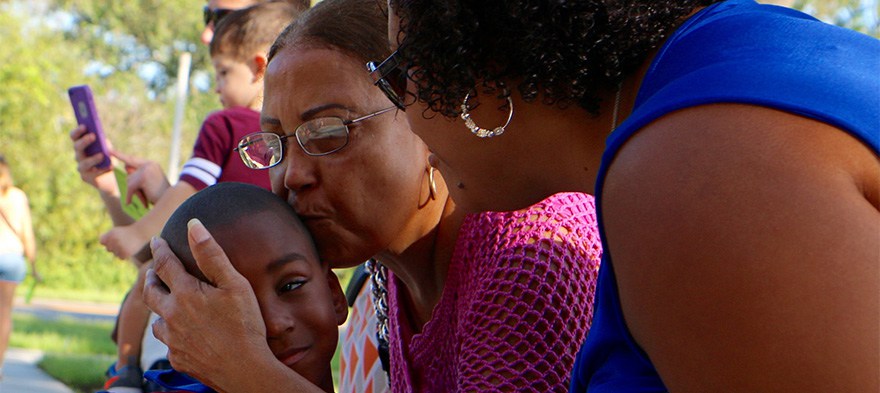
Jun 20, 2018 12:00:00 AM
If we were to rewind a few years, the NAACP’s charter moratorium would have changed the trajectory of my children’s lives. I, as a mother, would have been left with no choice but to send my children to an underperforming school, at least until I was able to afford a home in a place where quality schools were embedded in the ZIP code and came with the keys to the house. But so many families will never financially be able to make that move; without options, their children are condemned to the same schools that have been failing their neighborhoods for decades. It’s been 12 years for me and I am still waiting for the city of Indianapolis to fix its very broken system. And when push came to shove with my own children’s futures, I wasn’t going to wait around another minute. I had an obligation as a parent to consider every single option available to me.David McGuire was a middle school teacher and aspiring principal when he first started writing about his role models in education. Now the Hoosier native focuses on building the ranks of Black male educators, who represent only 2 percent of the teaching force. “As a Black male educator, I believe boys of color need structure and rigorous instruction, but I also firmly believe, in order for these boys to be successful, schools must provide them with an education that is individualized and tailored to their needs and interests,” he wrote.
There is a common phrase among American Indians when describing their own experience of navigating the White world while retaining their customs: walking in two worlds. New reservation teachers also have to learn to walk in two worlds: their own, and the world belonging to their new community. Learning to walk in two worlds is, for some new reservation teachers, a significant challenge. It means not that we try to assimilate into the tribal community, for we will always be outsiders there, but that we try to understand that community in order to serve it better. It also humbles us.I didn’t always see eye to eye with teacher Andrew Wilk, but his writing always forces me to think more deeply about my convictions around education reform. He was a career changer who brought a skeptical eye to the ”business of schooling,” but we shared a sense of outrage around the dearth of ambitious instruction and the epidemic of remedial education. One piece he wrote took aim at the trendy “talk therapy” of restorative justice.
There is a reason that most teachers are in favor of more discipline rather than less; they want to be able to teach. Just one student who feels they can mouth off, torment their classmates, or otherwise be disruptive can ruin the educational environment of the entire classroom and distract—or demotivate—the students who really want an education and desperately need their teacher to be able to control the class. There is an old saying when it comes to classroom discipline: “You spend 90 percent of your time dealing with 10 percent of your students.” The unfortunate truth is that a subset of that 10 percent is going to be unpersuaded by persuasion, and consequences that extend beyond peer juries or counseling will be necessary to convince them to modify their behavior.
I’m a spiritual person, so I started to see Ms. Hudson’s efforts and my dwindling hours as a “sign” that I was destined for something bigger than a food service job. I thought about another high school teacher, Joslyn Shannon, who told me she didn’t want me to fall through the cracks, who gave me warm meals, computer lessons and my first job. I thought about all the lessons I learned from my family instability, which offered me a front row seat to the education inequities I am now fighting to eradicate.To all those everyday parents, students and teachers who are willing to share their perspective, have a restful summer. You earned it.
Tracy Dell’Angela is a writer, education nonprofit executive director and a mom passionate about education improvements. Previously, Tracy was Director of Outreach and Communications for the Institute of Education Sciences (IES) at the U.S. Department of Education in Washington, D.C. She came to IES from the University of Chicago Consortium on Chicago School Research, which produces research that drives improvement in Chicago and nationwide. She also served as Senior Project Director for 100Kin10 at the University of Chicago and was Director of Program Investments and Partnerships for the Chicago Public Education Fund. Tracy spent most of her career as an award-winning newspaper journalist, including 12 years at the Chicago Tribune as an education reporter covering national policy and the Chicago Public Schools. A Californian by birth but a Chicagoan in spirit, Tracy attended University of Chicago as a master's student in social sciences and earned a B.A. in journalism and political science from San Diego State University.
Few issues in education spark more tension and debate than standardized testing. Are they a tool for equity or a burden on students? A necessary check on school systems or a flawed measure of...
Charter schools are public schools with a purpose. Operating independently from traditional school districts, they're tuition-free, open to all students, and publicly funded—but with more flexibility...
Despite the benefits of a diverse teaching force, prospective teachers of color fall out of our leaky preparation pipeline at every stage: preparation, hiring, induction, and retention. Here’s what...
Ed Post is the flagship website platform of brightbeam, a 501(c3) network of education activists and influencers demanding a better education and a brighter future for every child.
© 2020-2025 brightbeam. All rights reserved.
Leave a Comment